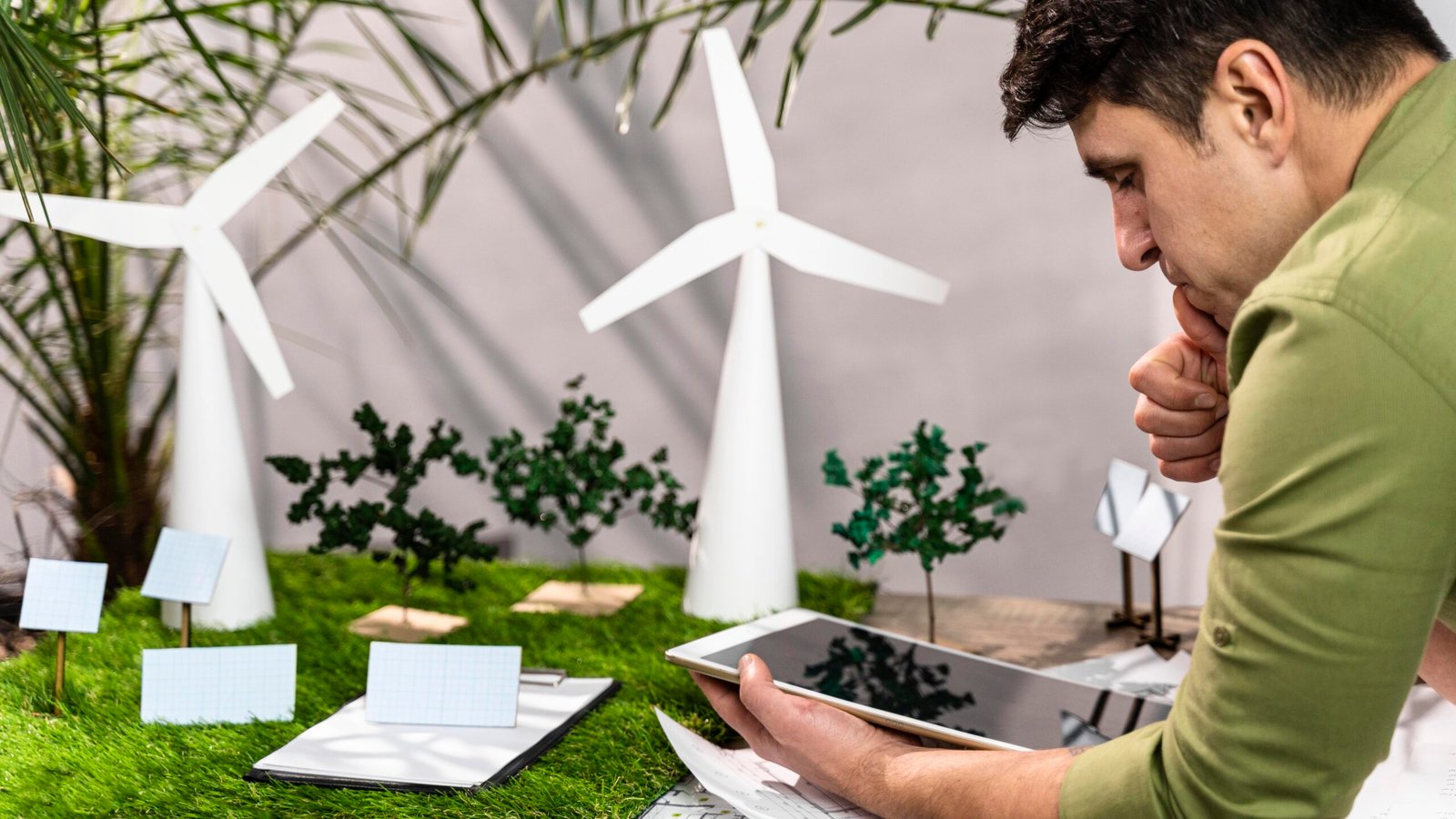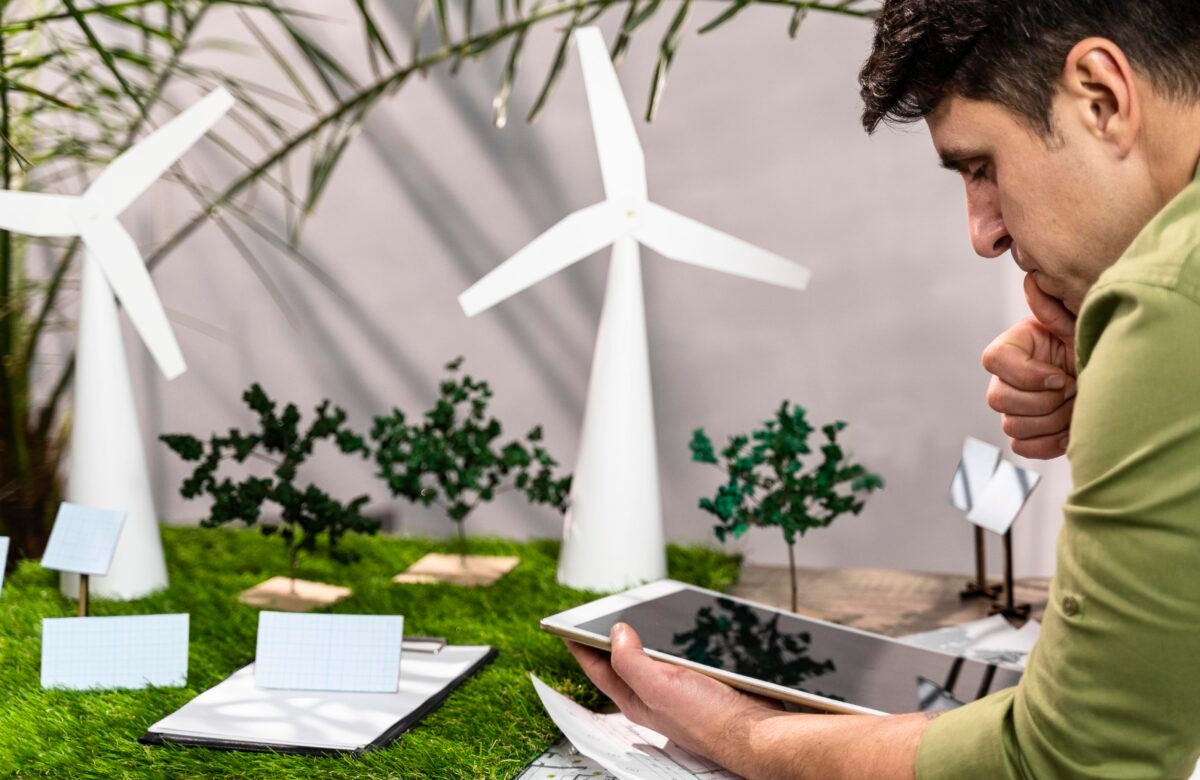
Clean technology, or cleantech, is a burgeoning sector comprised of innovative products, services, and processes designed to minimize environmental impact while driving economic growth. At its core, cleantech is about harnessing technology to address pressing global challenges such as climate change, resource depletion, and pollution (Caprotti, 2012). This sector encompasses a wide range of technologies, including renewable energy, energy efficiency, sustainable transportation, water treatment, and waste management solutions.
The Imperative for Cleantech
The Intergovernmental Panel on Climate Change (IPCC) has unequivocally stated that human activities are the primary driver of climate change (IPCC, 2021). The consequences are far-reaching, from extreme weather events to rising sea levels and biodiversity loss. To mitigate these impacts and build a resilient future, a rapid transition to a low-carbon economy is imperative. Cleantech is at the forefront of this transformation, offering solutions that can significantly reduce greenhouse gas emissions and promote sustainable resource use (Stern, 2015).
The urgency of this transition cannot be overstated. The IPCC report indicates that to limit global warming to 1.5°C above pre-industrial levels, global net human-caused emissions of carbon dioxide need to fall by about 45% from 2010 levels by 2030, reaching net zero around 2050. This ambitious goal requires immediate and sustained action across all sectors of the economy, with cleantech playing a crucial role in enabling this transition.
The Cleantech Revolution
The cleantech sector is experiencing unprecedented growth, driven by a confluence of factors. Increasing consumer awareness of environmental issues, supportive government policies, and declining costs of renewable energy technologies have accelerated the adoption of clean solutions (Bloomberg NEF, 2021). From solar and wind power to electric vehicles and energy storage, cleantech innovations are reshaping industries and creating new markets. The global cleantech market is projected to reach $2.5 trillion by 2022, highlighting its economic significance (Allied Market Research, 2021).
This growth is evident across various subsectors of cleantech :
- Renewable Energy: Solar and wind power have seen dramatic cost reductions, making them increasingly competitive with fossil fuels. In many parts of the world, renewables are now the cheapest form of new power generation.
- Energy Storage: Advancements in battery technology are enabling greater integration of intermittent renewable energy sources and accelerating the electrification of transportation.
- Smart Grids: Digital technologies are transforming electricity networks, improving efficiency, reliability, and the integration of distributed energy resources.
- Sustainable Transportation: Electric vehicles, hydrogen fuel cells, and advanced biofuels are revolutionizing the transportation sector, offering cleaner alternatives to traditional fossil fuel-powered vehicles.
- Water and Waste Management: Innovative technologies are improving water treatment and recycling processes, while new approaches to waste management are promoting a circular economy.
Entrepreneurship as a Driving Force
Cleantech entrepreneurs are the pioneers of a sustainable future. Their innovative spirit, combined with a deep understanding of market needs, is essential for developing and commercializing groundbreaking technologies (Malen & Marcus, 2017). By identifying market gaps and developing scalable business models, these entrepreneurs are creating jobs, driving economic growth, and improving quality of life. A study by the International Renewable Energy Agency (IRENA) found that renewable energy jobs reached 11.5 million globally in 2019, demonstrating the sector’s potential for job creation (IRENA, 2020).
These entrepreneurs face unique challenges, including long development cycles, capital-intensive projects, and regulatory complexities. However, their role in driving innovation and commercializing new technologies is crucial for the cleantech sector’s success. From developing more efficient solar cells to creating innovative business models for energy services, cleantech entrepreneurs are at the forefront of the sustainability revolution.
Challenges and Opportunities
While the cleantech sector holds immense promise, it also faces significant challenges. Access to capital, regulatory hurdles, and market adoption are common obstacles for cleantech startups (Gaddy et al., 2017). However, these challenges also present opportunities for those who can navigate them successfully.
Access to Capital: Cleantech ventures often require significant upfront investment and have longer paths to profitability compared to other technology sectors. This can make it challenging to secure funding, particularly for early-stage companies. However, the growing recognition of climate-related financial risks is driving increased interest from investors, including venture capital firms, corporate investors, and impact-focused funds.
Regulatory Environment: The cleantech sector is heavily influenced by government policies and regulations. While supportive policies can accelerate adoption, regulatory uncertainty can hinder investment and innovation. Entrepreneurs and investors must navigate this complex landscape, which varies significantly across different regions and countries.
Market Adoption: Introducing new technologies and changing established consumer behaviors can be challenging. However, increasing environmental awareness and the improving cost-competitiveness of clean technologies are driving greater market acceptance.
Despite these challenges, the opportunities in the cleantech sector are immense:
- Addressing Climate Change: Cleantech solutions are essential for mitigating the impacts of climate change, from reducing greenhouse gas emissions to building resilience to extreme weather events. The International Energy Agency (IEA) estimates that clean energy technologies could deliver over 40% of the emissions reductions needed to meet global climate goals (IEA, 2021). This presents a massive market opportunity for innovative solutions across various sectors.
- Driving Economic Growth: The cleantech industry is creating new jobs and industries, stimulating economic growth and development. A report by the World Bank suggests that the transition to a low-carbon economy could create up to 65 million new jobs by 2030 (World Bank, 2019). This transition is not just about replacing existing industries but creating entirely new sectors and economic opportunities.
- Improving Quality of Life: Clean technologies contribute to a better quality of life by providing access to clean air, water, and energy. The World Health Organization estimates that 7 million premature deaths annually are linked to air pollution, underscoring the potential health benefits of clean technologies (WHO, 2021). Beyond health impacts, cleantech solutions can improve energy access in developing regions, enhance urban livability, and contribute to more sustainable and resilient communities.
The Road Ahead
Realizing the full potential of cleantech requires continued investment, innovation, and collaboration. Governments, businesses, and investors must work together to create a supportive ecosystem for cleantech entrepreneurs (Polzin, 2017). The future of cleantech is bright, with continued innovation promising even more efficient and effective solutions. From advanced materials that improve solar panel efficiency to artificial intelligence optimizing energy use in buildings, the potential for groundbreaking developments is vast. As these technologies mature and scale, they will play an increasingly central role in shaping a sustainable, low-carbon future.
About The Underserved
The Underserved is committed to empowering underserved cleantech entrepreneurs. We offer a comprehensive suite of services, including access to capital, mentorship, and business development support. Our goal is to bridge the gap between innovation and opportunity, creating a more inclusive cleantech landscape.
Underserved cleantech visionary? Let’s fuel your startup’s growth together.
By partnering with The Underserved, you can contribute to a more sustainable and equitable future. Together, we can accelerate the transition to a clean energy economy while empowering marginalized communities.
References:
Allied Market Research. (2021). Clean Technology Market Outlook – 2022.
Bloomberg NEF. (2021). New Energy Outlook 2021.
Caprotti, F. (2012). The cultural economy of cleantech: environmental discourse and the emergence of a new technology sector. Transactions of the Institute of British Geographers, 37(3), 370-385.
Gaddy, B. E., Sivaram, V., Jones, T. B., & Wayman, L. (2017). Venture capital and cleantech: The wrong model for energy innovation. Energy Policy, 102, 385-395.
IEA. (2021). Net Zero by 2050: A Roadmap for the Global Energy Sector.
IPCC. (2021). Climate Change 2021: The Physical Science Basis.
IRENA. (2020). Renewable Energy and Jobs – Annual Review 2020.
Malen, J., & Marcus, A. A. (2017). Promoting clean energy technology entrepreneurship: The role of external context. Energy Policy, 102, 7-15.
Polzin, F. (2017). Mobilizing private finance for low-carbon innovation – A systematic review of barriers and solutions. Renewable and Sustainable Energy Reviews, 77, 525-535.
Stern, N. (2015). Why are we waiting?: The logic, urgency, and promise of tackling climate change. MIT Press.
World Bank. (2019). State and Trends of Carbon Pricing 2019.




